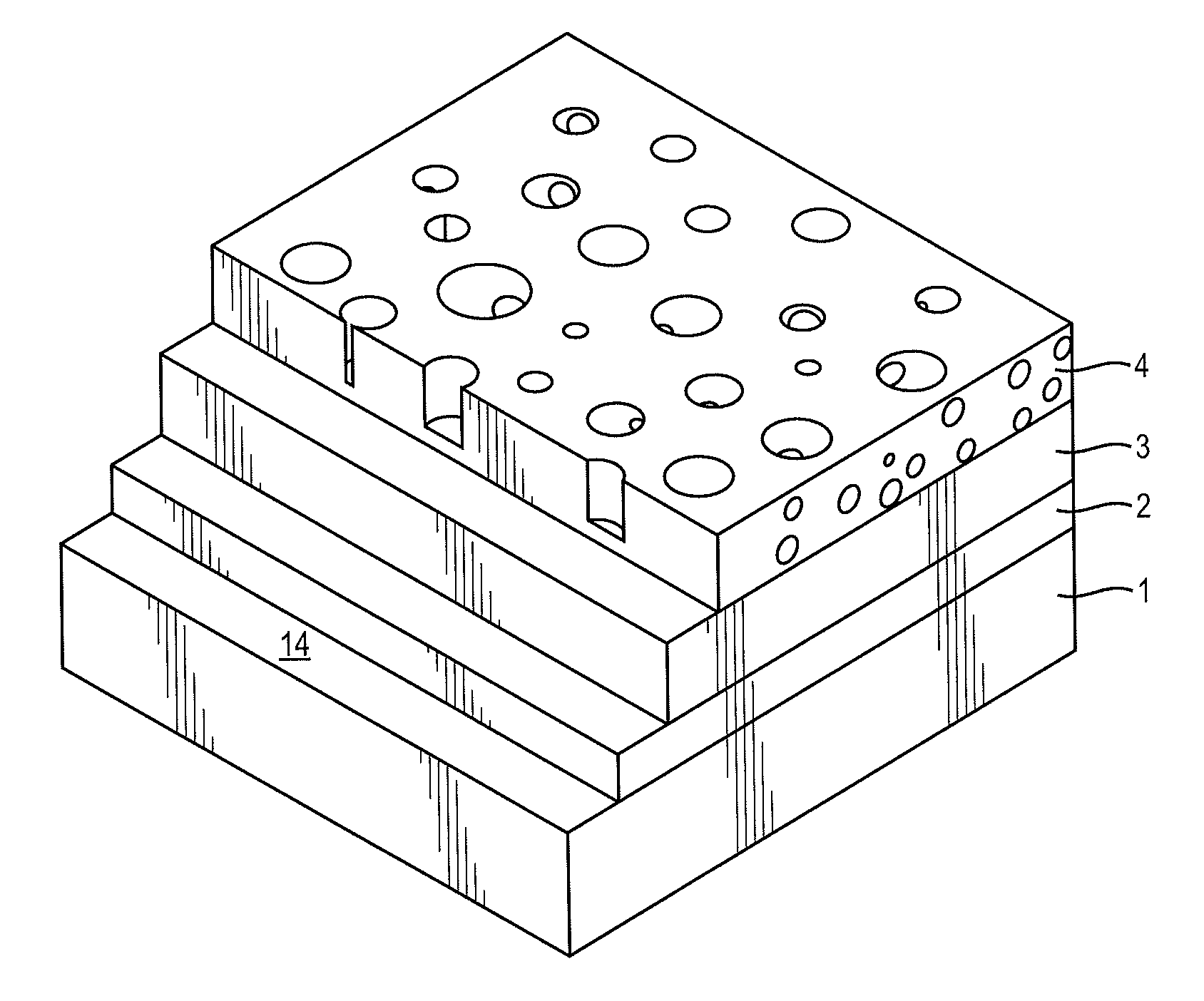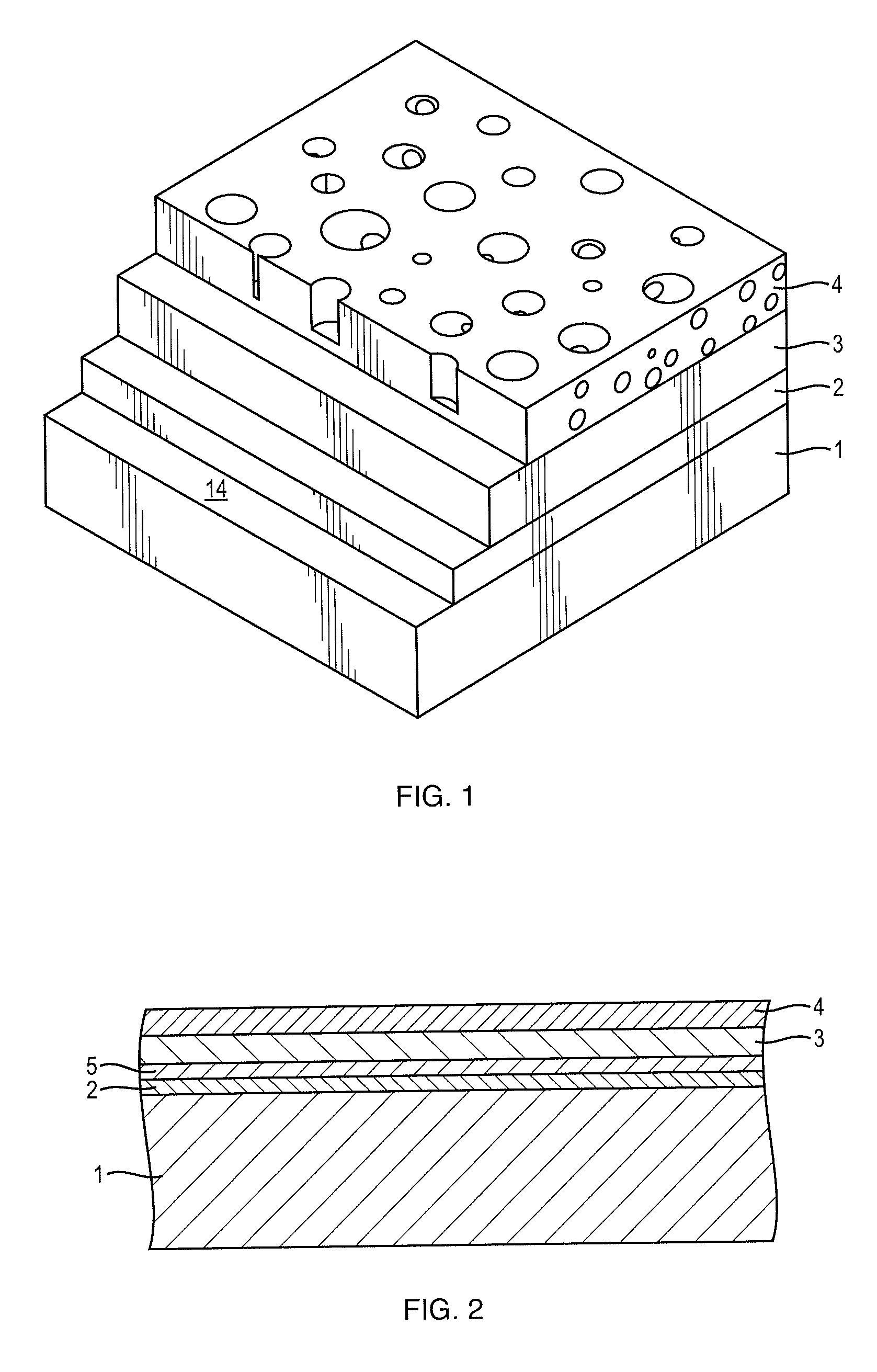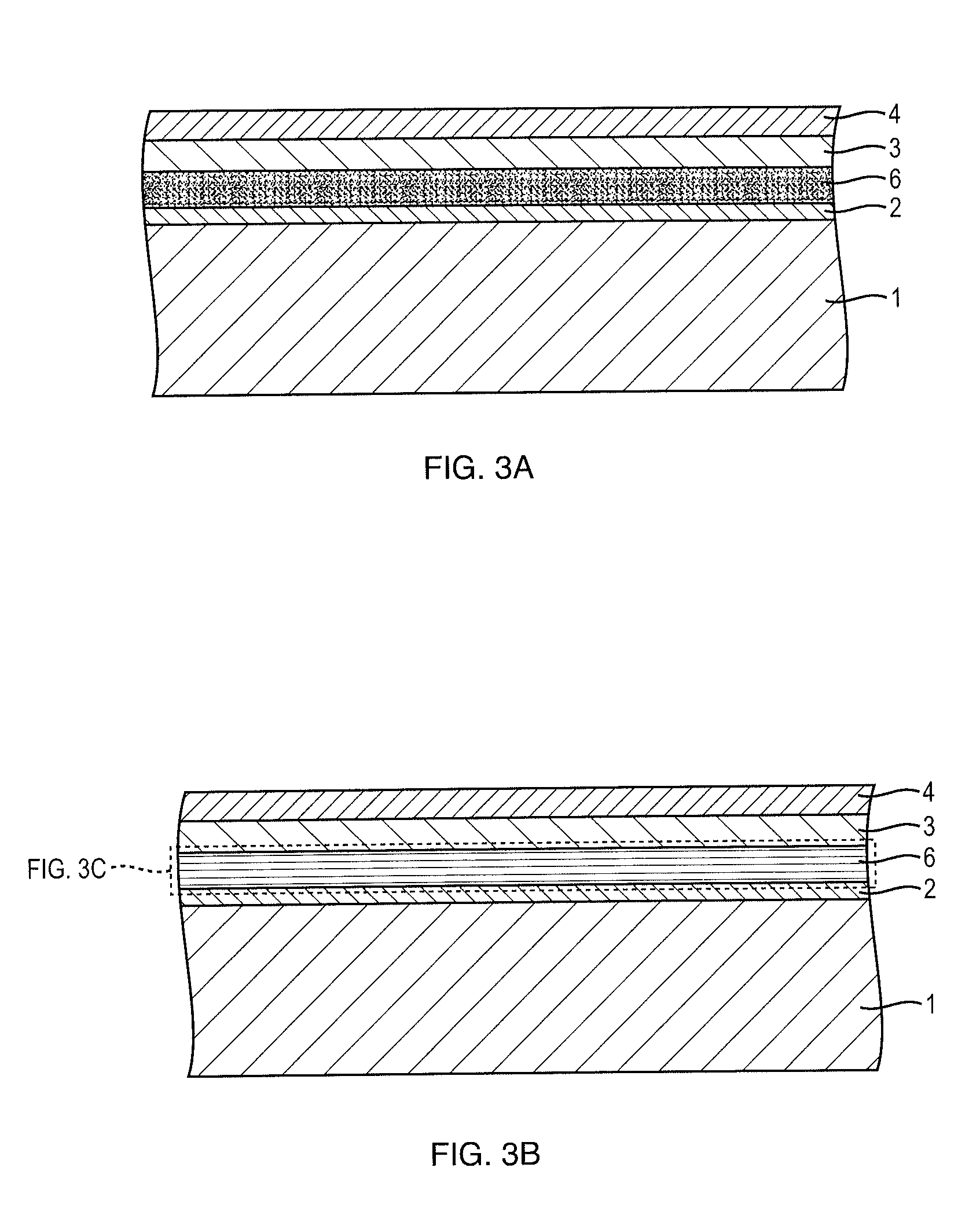Surgical Implant
a surgical and implant technology, applied in the field of surgical implants, can solve the problems of poorly osseointegrative, difficult to achieve the effect of osseointegration, and incompatibility of the surface of polymers such as paek family polymers, and implants made of these materials
- Summary
- Abstract
- Description
- Claims
- Application Information
AI Technical Summary
Benefits of technology
Problems solved by technology
Method used
Image
Examples
Embodiment Construction
[0038]Reference will now be made in detail to the various embodiments of the present disclosure, examples of which are illustrated in the accompanying drawings FIGS. 1-6. Wherever possible, the same reference numbers will be used throughout the drawings to refer to the same or like parts.
[0039]In an aspect, the present invention provides a surgical implant comprising a substrate having an exterior surface and a plurality of layers disposed over the substrate exterior surface. The substrate comprises a polymeric material, and wherein the plurality of layers comprises: (i) an activated substrate surface layer; (ii) a valve metal layer; and (iii) a porous valve metal oxide layer, wherein the valve metal layer is disposed between the activated substrate layer and the porous valve metal oxide layer.
[0040]Typically, an exemplary substrate for use in the surgical implant in accordance with the present invention comprises a polymeric material. The polymeric material may be a thermoplastic p...
PUM
| Property | Measurement | Unit |
|---|---|---|
| Length | aaaaa | aaaaa |
| Length | aaaaa | aaaaa |
| Length | aaaaa | aaaaa |
Abstract
Description
Claims
Application Information
 Login to View More
Login to View More - R&D
- Intellectual Property
- Life Sciences
- Materials
- Tech Scout
- Unparalleled Data Quality
- Higher Quality Content
- 60% Fewer Hallucinations
Browse by: Latest US Patents, China's latest patents, Technical Efficacy Thesaurus, Application Domain, Technology Topic, Popular Technical Reports.
© 2025 PatSnap. All rights reserved.Legal|Privacy policy|Modern Slavery Act Transparency Statement|Sitemap|About US| Contact US: help@patsnap.com



